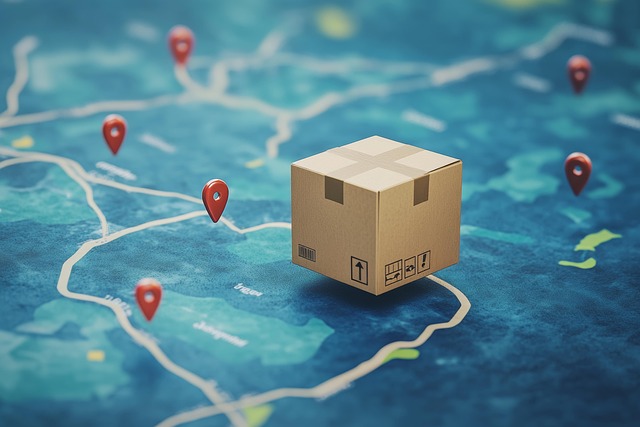Carbon-Neutral Logistics: A Practical Guide to Green Shipping
As global supply chains face increasing pressure to reduce environmental impact, carbon-neutral logistics has evolved from a niche concept to a business essential. Here’s how to implement genuine green shipping strategies that benefit both your business and the environment.
Defining Carbon-Neutral Logistics
Carbon-neutral logistics involves measuring, reducing, and offsetting greenhouse gas emissions across your supply chain. This goes beyond simple carbon offsets to include fundamental operational changes that minimize environmental impact from the start.
Practical Implementation Strategies
Route-Specific Green Solutions
Shenzhen to Los Angeles – Electronics & High-Value Goods
Primary Route: Yantian → Long Beach
Green Solution: LNG-powered vessel + electric drayage
Emission Reduction: 25-30% vs conventional shipping
Additional Benefits:
Priority berthing at some green ports
Enhanced brand marketing stories
Meeting corporate sustainability targets
Yiwu to Rotterdam – Consumer Goods & Textiles
Primary Route: Ningbo → Rotterdam
Green Solution: Slow steaming optimization + rail final mile
Emission Reduction: 15-20% vs standard transit
Additional Benefits:
Consistent transit times
Reduced fuel surcharge volatility
Better inventory planning reliability
Guangzhou to Hamburg – Furniture & Industrial Goods
Primary Route: Guangzhou → Hamburg
Green Solution: Biofuel blending + optimized container utilization
Emission Reduction: 40-50% for well-optimized shipments
Additional Benefits:
Lower per-unit shipping costs
Reduced packaging materials
Improved damage rates
Measurable Reduction Approaches
Transportation Optimization
Consolidation Strategy: Combine LCL shipments to maximize container utilization
Route Planning: Select direct routes with modern vessel types
Modal Shifting: Balance sea-air-land combinations for optimal emissions
Operational Efficiency
Digital Documentation: Eliminate paper-based processes
Smart Packaging: Right-size packaging to reduce volume and weight
Warehouse Planning: Strategic inventory placement to minimize transportation
Carbon Offset Integration
Choosing Quality Offset Projects
Verified Standards: Look for Gold Standard, Verified Carbon Standard
Project Types: Renewable energy, forest conservation, methane capture
Transparency: Full documentation of offset calculations and retirement
Implementation Framework
Calculate emissions using verified methodologies
Prioritize reduction through operational changes
Offset remaining emissions through certified projects
Document and verify all environmental claims
Industry-Specific Applications
Electronics & Technology
Challenge: High-value, time-sensitive shipping requirements
Solution: Carbon-neutral air freight with verified offsets
Business Case: Meets tech company ESG requirements while maintaining speed
Fashion & Apparel
Challenge: Seasonal peaks and rapid inventory turns
Solution: Ocean freight with carbon insetting
Business Case: Aligns with industry sustainability initiatives
Consumer Goods
Challenge: Cost-sensitive with thin margins
Solution: Optimized container loading + strategic offsets
Business Case: Reduces both costs and emissions simultaneously
Implementation Roadmap
Phase 1: Baseline Assessment
Measure current carbon footprint across all shipping activities
Identify highest-impact reduction opportunities
Set realistic reduction targets and timeline
Phase 2: Operational Changes
Implement packaging optimization
Route and mode selection improvements
Carrier selection based on environmental performance
Phase 3: Offset Strategy
Select appropriate offset projects
Integrate carbon costing into logistics decisions
Develop transparent reporting systems

Common Challenges & Solutions
Challenge: “Green shipping costs too much”
Solution:
Start with efficiency measures that save money
Phase in premium green options gradually
Calculate total cost including brand value and customer retention
Challenge: “Too complicated to implement”
Solution:
Begin with single lane or product category
Use existing verification frameworks
Partner with experienced green logistics providers
Challenge: “How to verify real impact”
Solution:
Use standardized calculation methodologies
Require third-party verification
Implement transparent reporting
Getting Started Checklist
Conduct baseline emissions measurement
Identify quick-win reduction opportunities
Select verification methodology and partners
Train staff on green logistics principles
Develop customer communication plan
Implement tracking and reporting system
Carbon-neutral logistics requires commitment but delivers tangible business benefits beyond environmental responsibility. Companies implementing green shipping strategies often discover unexpected operational efficiencies and competitive advantages.
Ready to develop your carbon-neutral logistics strategy? We provide:
Comprehensive emissions measurement
Verified offset program integration
Practical reduction implementation
Start your green logistics assessment – Share your primary shipping lanes and volumes for a customized carbon reduction plan with clear implementation steps.
Related Posts
Overseas Warehouse Fulfillment: Complete Guide for E-commerce Sellers
Overseas Warehouse Fulfillment: Complete Guide for E-commerce Sellers How Overseas…
Solving Top 5 International Shipping Pain Points from Shenzhen to Every US State
Solving Top 5 International Shipping Pain Points from Shenzhen to…
The Ultimate Guide to Choosing an International Freight Forwarder
The Ultimate Guide to Choosing an International Freight Forwarder In…

